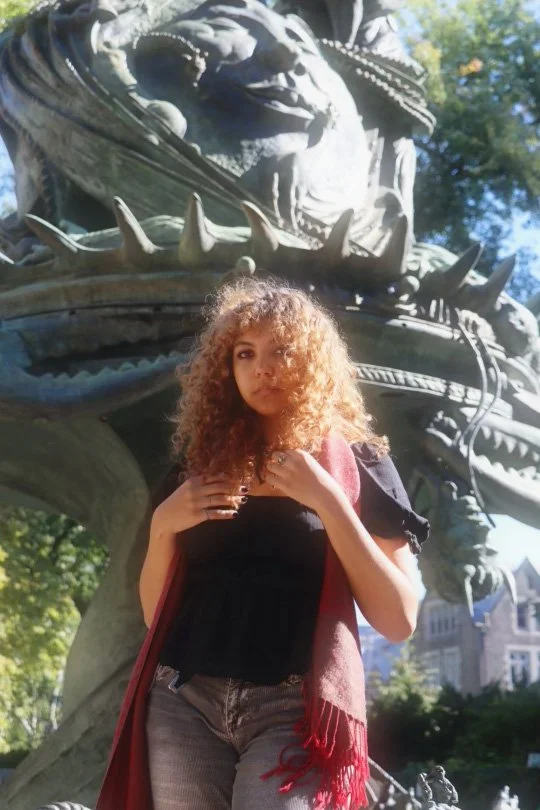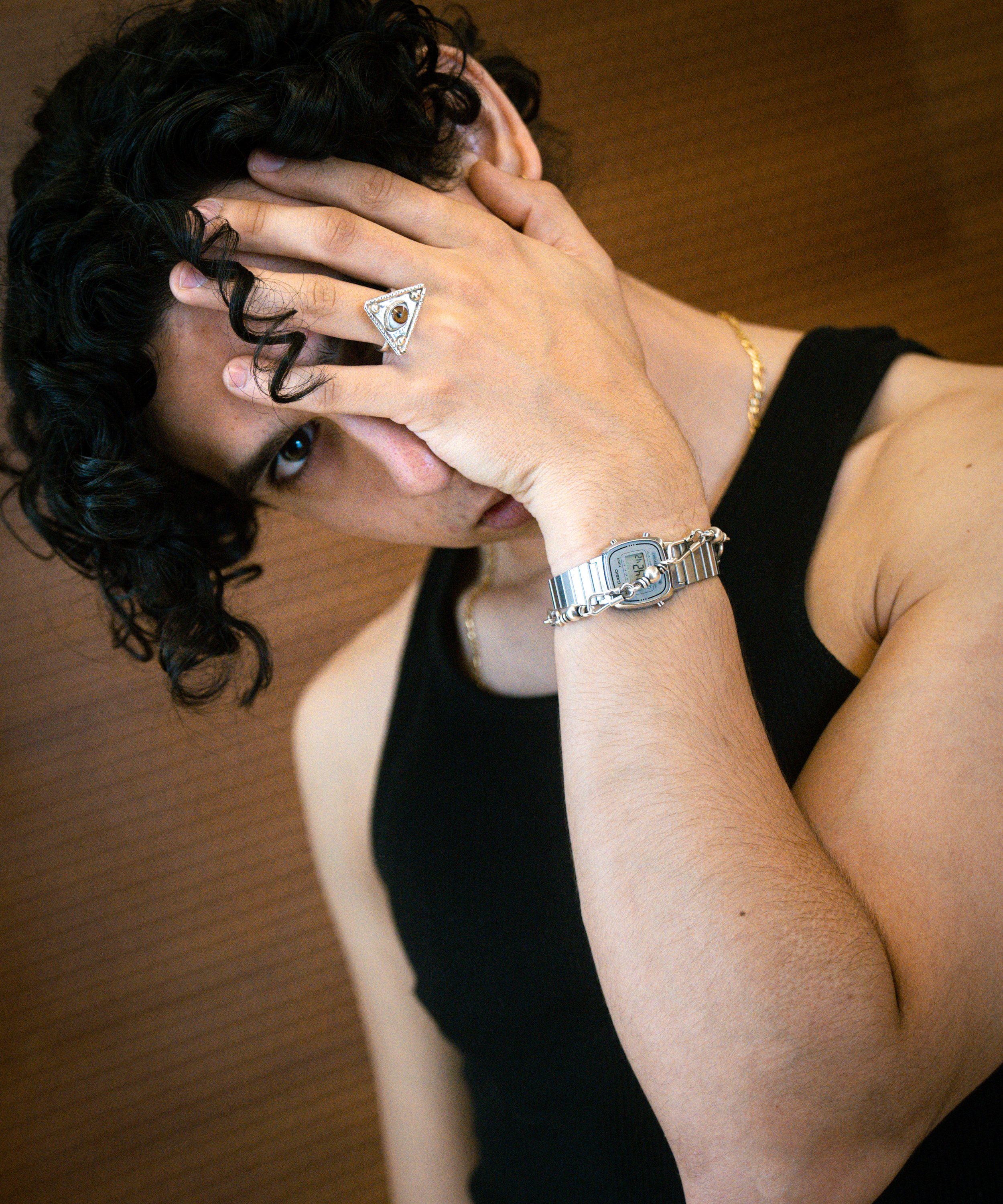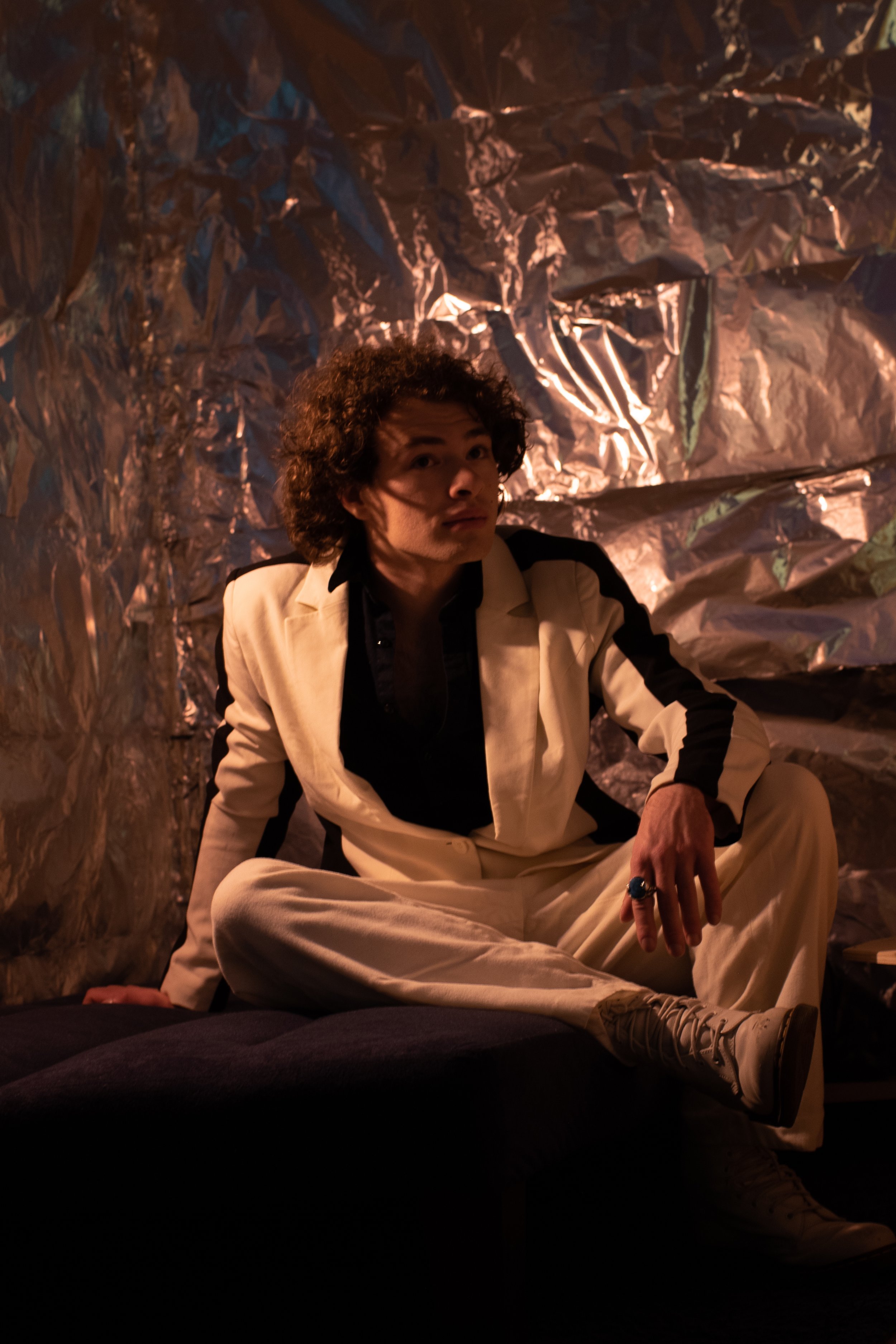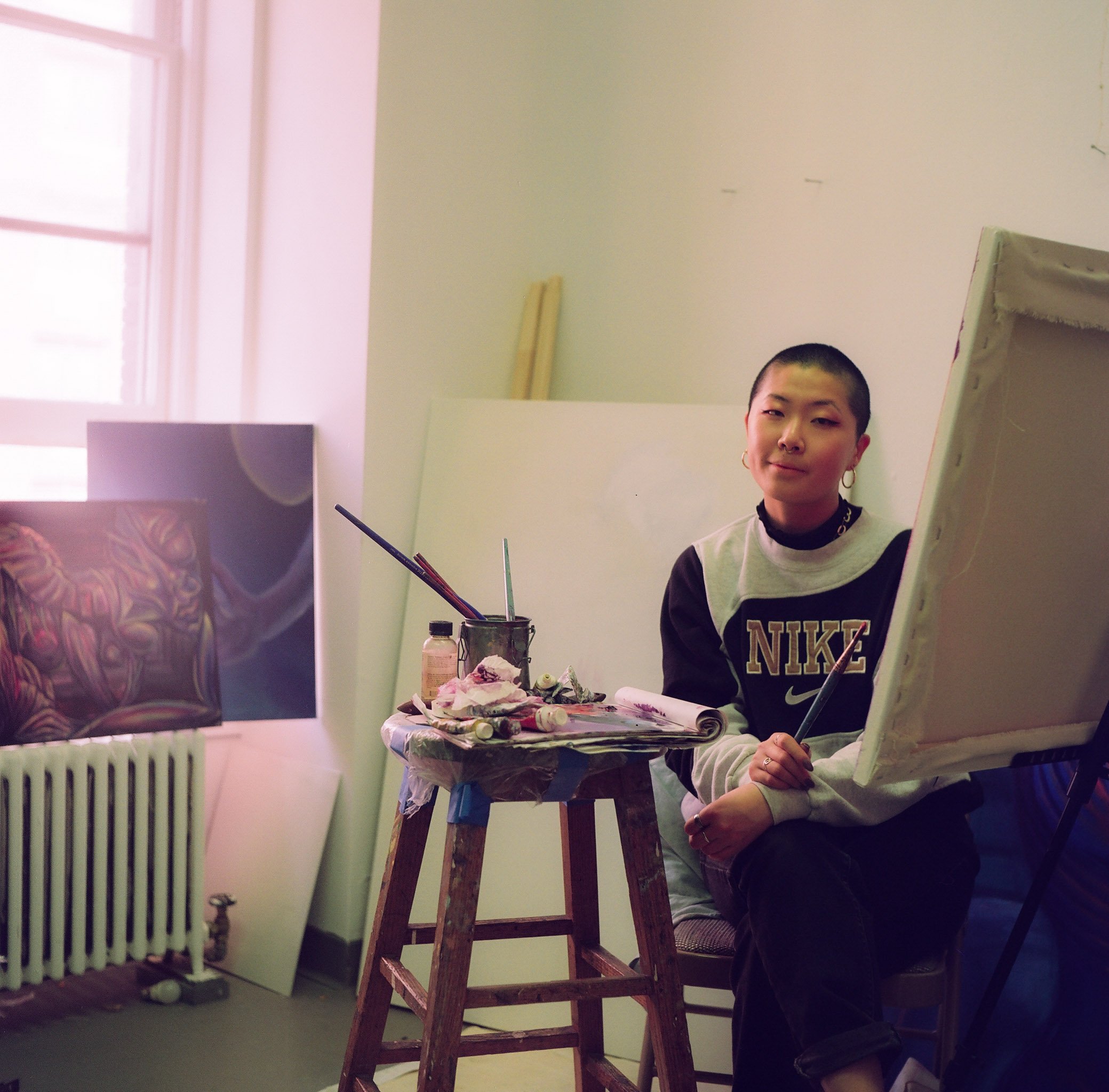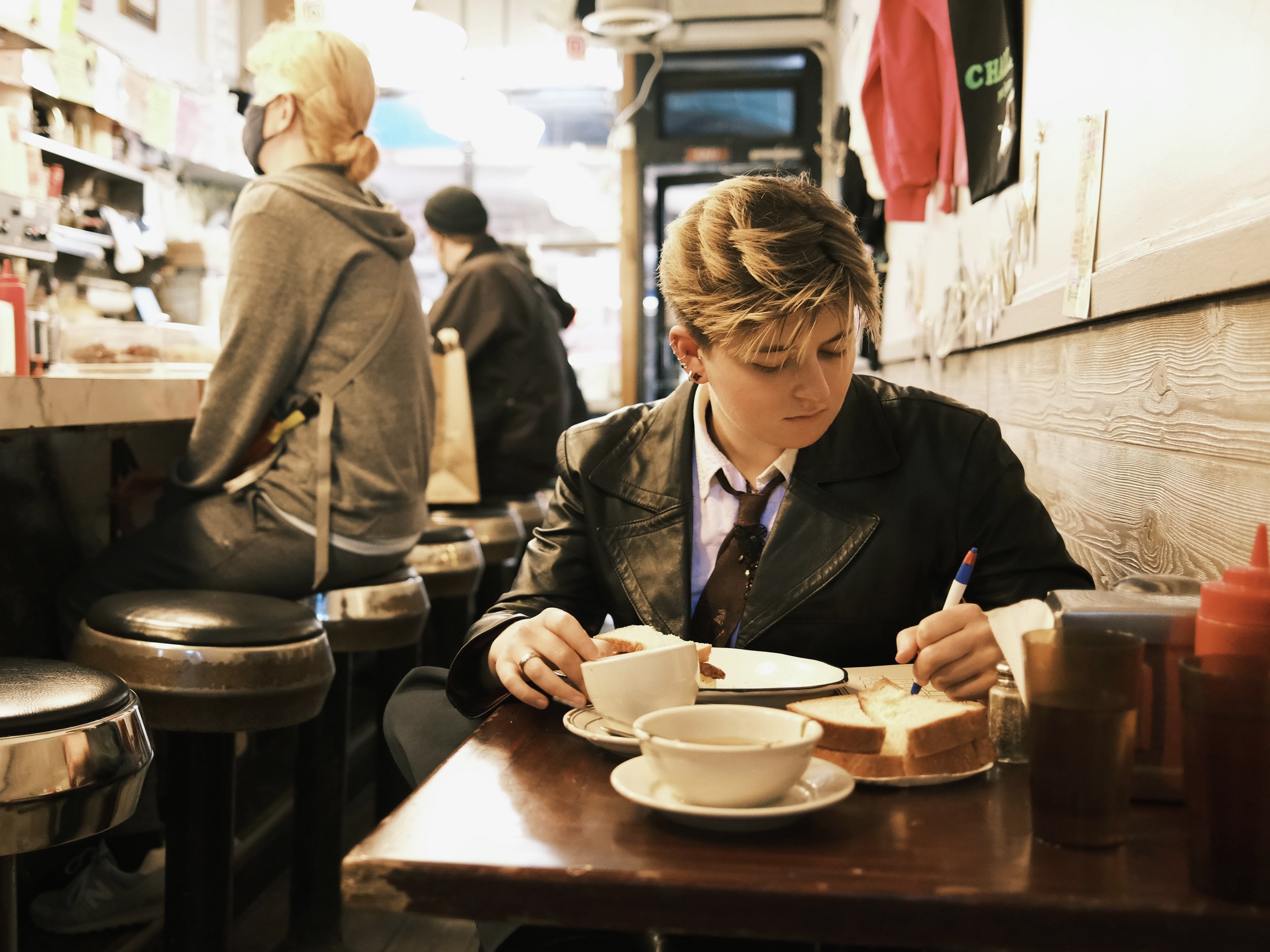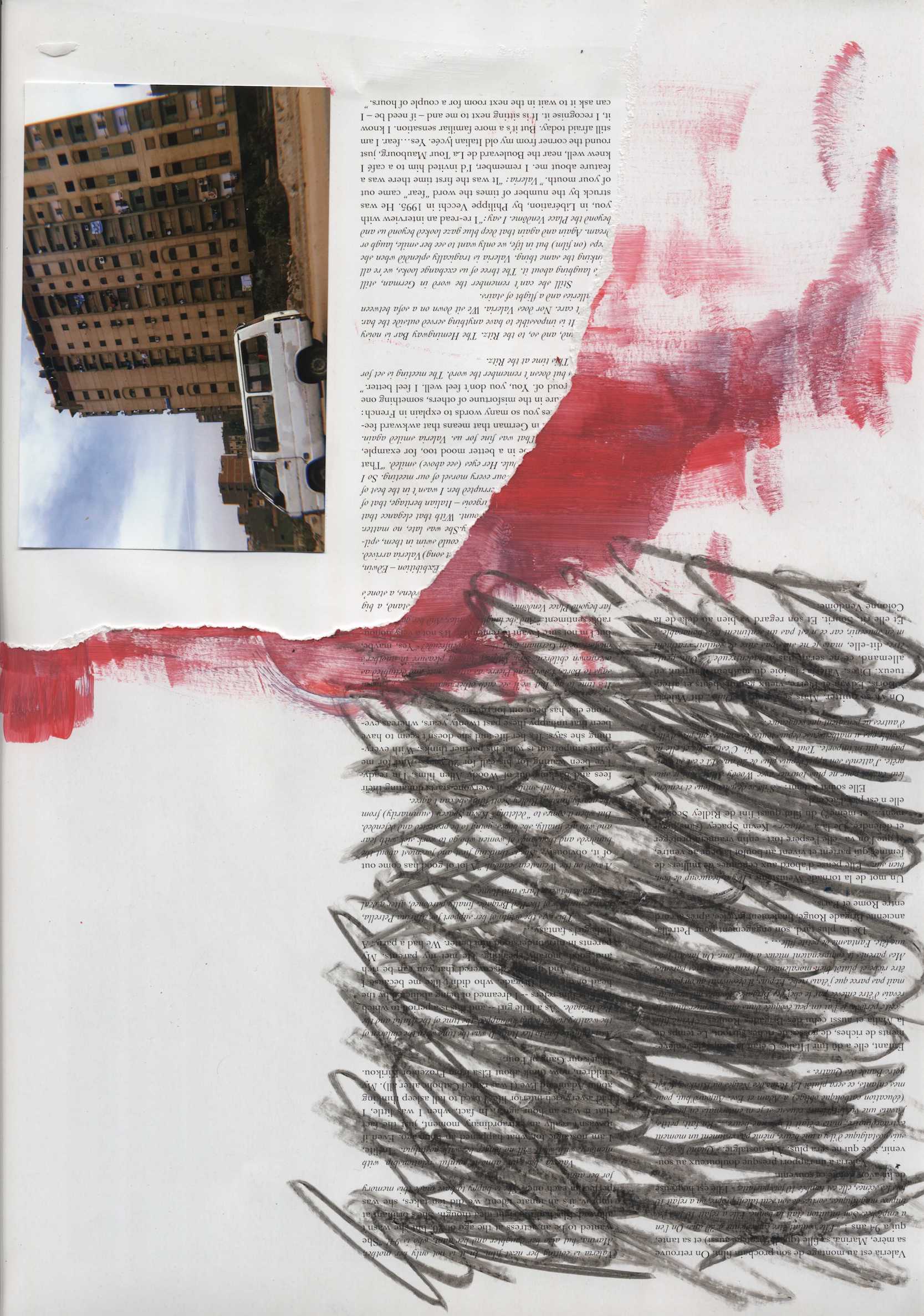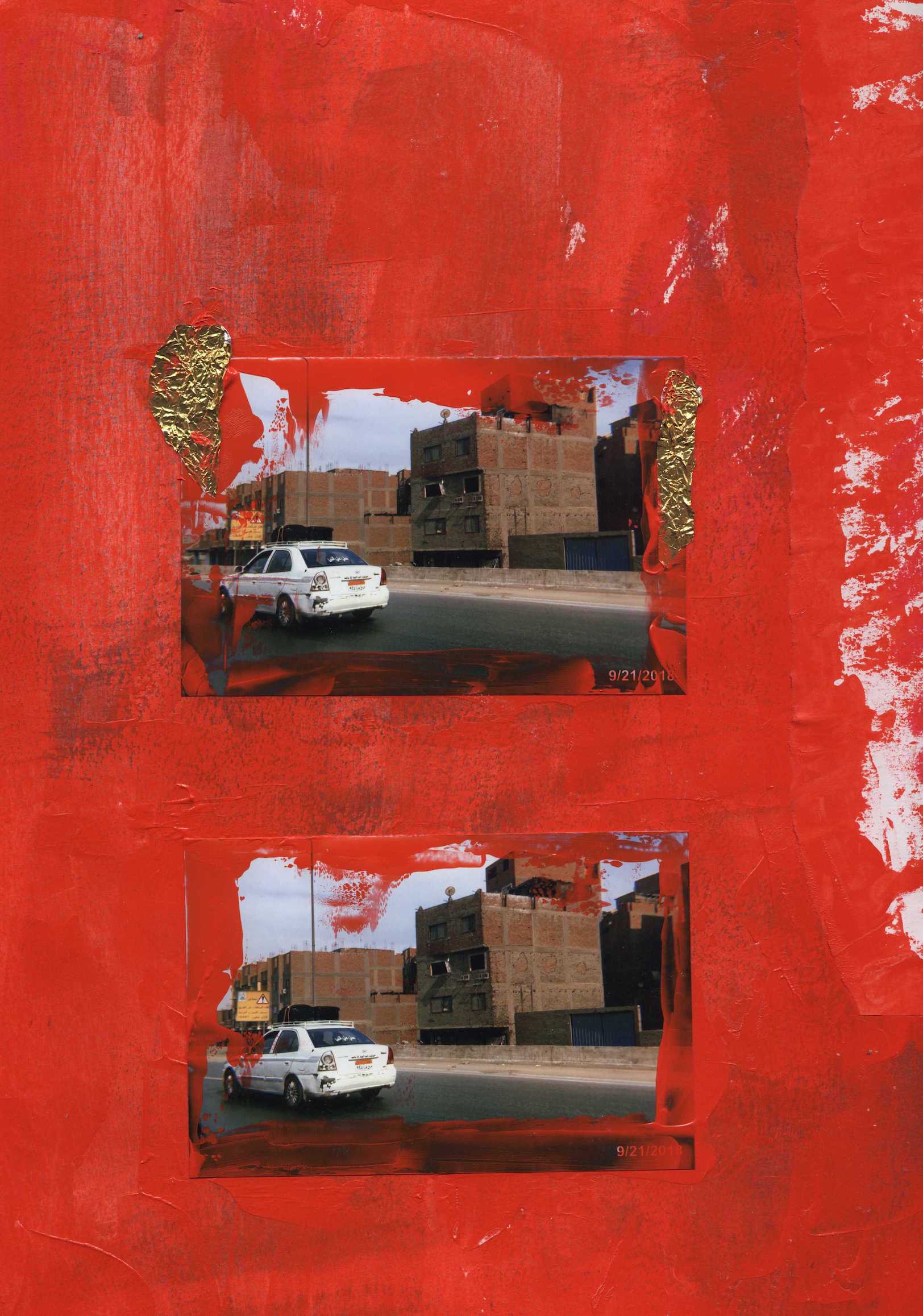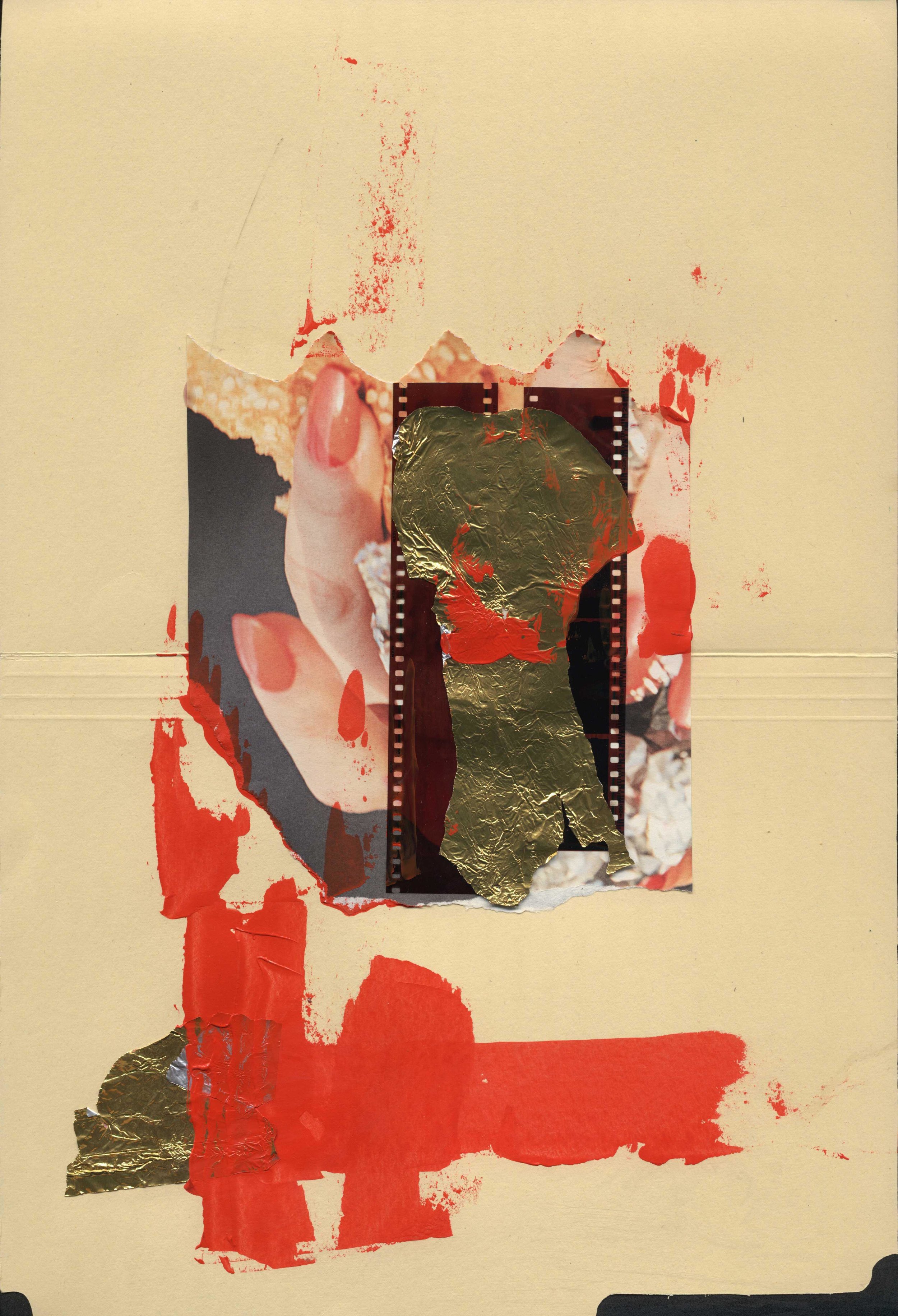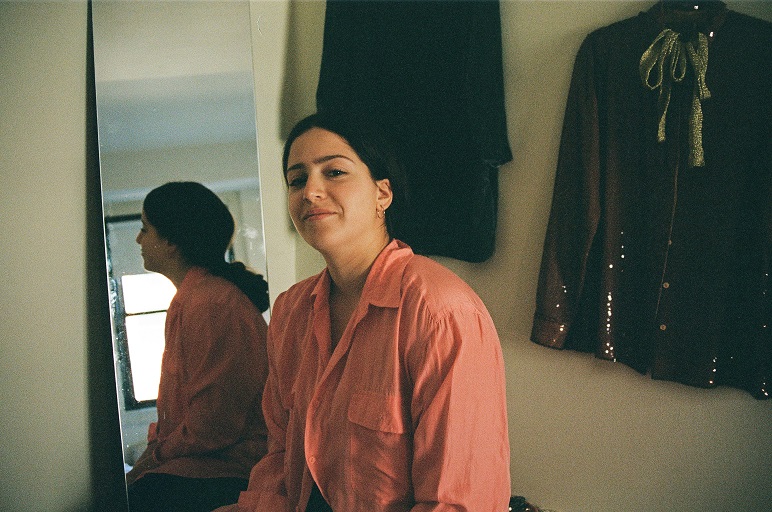
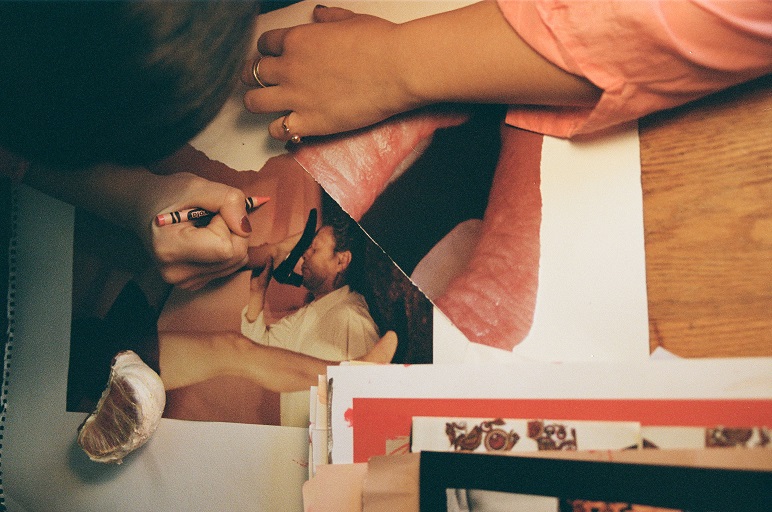


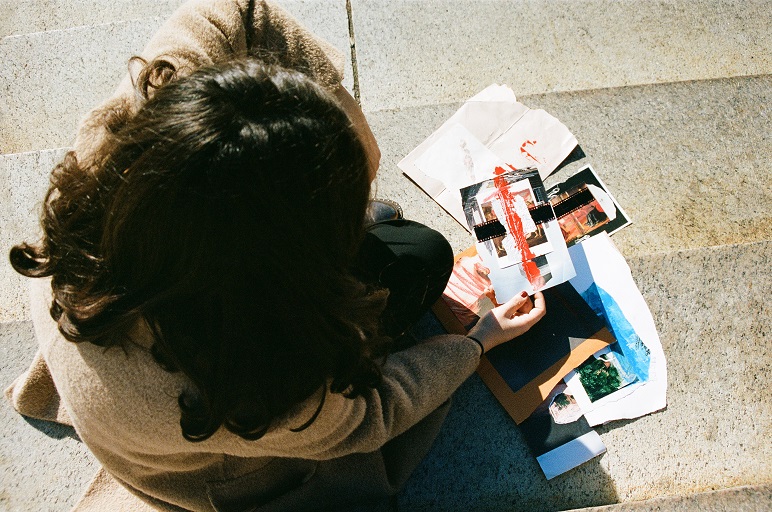





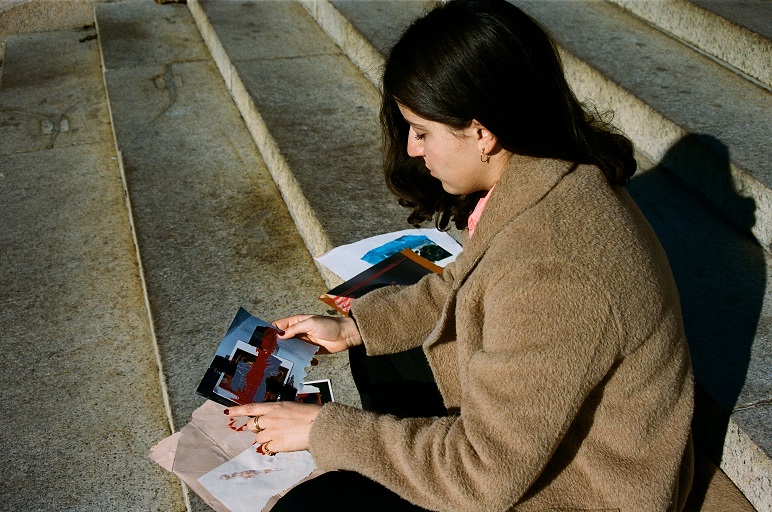

Photographed by India Halsted
Interviewed by Morgan Becker
Introduce yourself.
My name is Ruba, and I’m a sophomore at Barnard College. I’m majoring in Art History and hopefully Visual Arts as well. I’m an artist. I collage, and paint, and embroider. I’m also a student athlete, among other things. I’m slightly all over the place.
Describe your evolution as an artist. Have you always been drawn to collage, or did you work your way toward it through other mediums?
When I was very young, my dream was to be a fashion designer. I started sewing when I was about ten. I would make pillow cases and bags and make my mom’s friends buy them, which was extortionate. And then I made it into clothes. From the ages of ten to fifteen, it was sketching and doing design. I think that although it seems different, [fashion design] is very related to what I do now. In high school, I did a lot of painting and drawing, but found that just one medium wasn’t right for me. Though sometimes I think, with rowing and other things, I’ve left that passion behind, it’s definitely led me to where I am; with what materials and crazy things I like to work with.
I was particularly interested in the embroidery you use in your collages — how did the transition happen from functional sewing to what you do now?
I was very particular about hems. Around age twelve, I had a uniform at school and I changed everything in it just a little bit. And then I got bored — there wasn’t enough expression in it, really. I started using more yarn, thicker thread, and I would embroider random stuff on the clothes I was making. Then that led its way into my art class, and onto paper, and into journals. I would take photos and I would stitch into those. The thread was, kind of, thethread, from the start of my creative endeavors to where I am now.
Ruba Nadar - 2018
How does your own identity come across in your art?
So I’m Egyptian-Lebanese, but my parents mainly grew up in the US. I grew up in London. I don’t speak Arabic, but I’m learning currently and I feel this kind of strange identity of being English but not really. Being American, but also not really. Not speaking the language of where I am actually from has made me really passionate about it, and curious. So I practice Arabic calligraphy, and I’ve stitched Arabic letters into some works. I try and incorporate where I’m from because I feel it has something to say about who I am. Even if I fully can’t articulate it, I can articulate it better.
What, or who, has inspired you this week?
This week, one of my favorite artists — his name is Hassan Hajjaj, he’s English-born but I believe he’s Moroccan — is doing a documentary series on this all-women biker gang in Marrakech. He does a lot with mixed-media and taking different brands and logos and fabrics and creating some kind of social commentary with it. It has the most amazing color as well. I’ve been on his Instagram, just enjoying it.
Favorite artists?
My favorite artists are Robert Rauschenberg and Anselm Kiefer. Robert Rauschenberg makes what he calls ‘combines,’ like big collages with mixed media and random things. It’s the kind of art that I really look to for inspiration — not the kind of art that I’d put on my walls. It’s weird and interesting. And Anselm Kiefer does mixed media, as well. He’s just a genius. He’s amazing.
What kind of art do you put on your walls?
I actually have a slightly obsessive personality when it comes to interior decoration. I’ve maybe redesigned my dorm four times this year. It’s ridiculous. I started off the year like, yeah, Robert Rauschenberg, Jasper Johns, this is what I want to be seeing, and it was just too much color. And I had maybe, twenty posters up? It was ridiculous. I took it all down. Now, I’ve got a Botticelli, and I have some Northern Renaissance, very smooth paintings, and I only have two posters up. That’s what I’m enjoying looking at, which has nothing to do with anything that I make.
Photograph by India Halsted
Where and in what context do you work best?
Usually, on the floor of my room. And the context — it’s slightly strange — I have these ridiculous bursts of needing to get something out. And I’ll sit on my floor and it’ll literally look like a war zone, with paper everywhere and magazine cut-outs, and so many accidents. Paint everywhere. I’m really scared for the end of the year when I have to move out. It’s kind of like a frenzy (which makes it seem so dramatic, it really isn’t) that lasts like, two, three, days, of prolific — I don’t know about impressive — work. When I’m done, I don’t look at any of it. I put it all under my bed and then, when inspiration strikes, it all comes back out and the whole cycle starts again.
To what extent would you say the process is spontaneous? Do you know, generally, what a piece might end up looking like?
Definitely not. I’ll start by getting a massive book of A1 or A2 paper. Paint every single page of them, let them dry, leave them for, like, a month, bring them all back out, then just go from there. One day I’ll finish something: I’m like, ‘Wow. Amazing,’ then look at it the next day and I’m like, ‘Oh my gosh, what was I thinking?’ And so then I’ll add something else. I definitely have a tendency to overdo some of my work.
It seems like a lot of your work involves reconfiguration — of advertisements, novels, other artists’ photographs. At what point in the creative process would you say a piece becomes cohesively yours?
That’s definitely tough, because collaging with found materials involves a lot of other people’s work, which I’m very conscious of. But when it’s done, and I look at it, it’s saying something about me. Some message. With a lot of the things that I do, it’s about what’s not there. I’ll put something down and then paint over it, or rip it off and you’ll just see what’s been left. It’s more about the thought behind it. I cut out other people’s images, but it’s all about the composition. Once it’s something that I identify with myself, once these colors are in line, once this stitch looks good with this, then I can say that this work is my own. Yeah, that’s someone else’s face, but it’s all working together for something bigger.
Tell me about the piece that you’re most proud of.
I framed a work for my dad to put in his office. When I was in Cairo, I brought back all these newspapers — it’s a collage, and essentially the obituaries page is the background. I collected all of these old photos from old Egypt and romanticized Alexandria and put them on there, kind of painted over it, and put a picture of my dad. It’s an interesting look at who he is, in relation to where he’s from, but also where he’s not from. And I think it says a lot more than I’m used to my work saying. I’m quite proud of that.
Tell me about the role color plays in your collages. If you could only create monochromatic works from here on out, which shade would you choose?
Probably red. Color does play a big role; it works in different series. If red works on one piece, I’ll do that for the next ten and get sick of it, move on to blue. But yeah, red is the most striking color in any shade. It also has something to say by way of what it means to both me and to the viewer. Whether it looks like your grandmother’s trademark lipstick or your favorite pair of socks, it relates to the most random of things.
What’s something that everyone should know about you?
Everyone should know that I’ve taken to carpeting my dorm room. I tell people and they’re confused at what that means. I quite like the aesthetic of putting carpet where it shouldn’t be. So I’ve carpeted the wall behind my bed, and I’ve carpeted my dresser.
Is it like, a headboard-type situation?
You could say that. Some people don’t agree, but I would say that there’s definitely a 70s vibe going on, which I’m quite enjoying.
Who do you make art for and why do you continue?
Interesting question. I’d say I make it for myself, but I don’t know. I get very sick of my work very quickly. I think I make it mainly because it’s something that I have to do. Not in a pretentious way or in like, a tortured artist way. I spend so much time doing many different things that don’t relate to my actual passions in life, and this is something that’s very important to me. Whether I’m good at it or not, it’s something that I want to pursue. In thinking about what I want to do, and who I want to be, I want to be someone who creates things.
Anything else you’d like to add? Closing remarks?
I’m a culturally-confused collage artist. Living in New York. Doing my thing. Rowing on the Harlem River, but also going into creative frenzies on the carpet of my dorm room. Yeah.




















